The Kerry Way - 11 Days & 10 Nights
- Walking Kerry’s historic trails amongst the highest peaks in the Emerald Isle
- Soak up the atmosphere of County Kerry’s market villages and towns
- Lively Irish music and the ‘craic’ of authentic old-world pubs
- The 2000 year old Staigue Fort is one of Ireland’s best examples of a ring fort
- Majestic views of the Lakes of Killarney from the grounds of Muckross House
Gallery
Itinerary
Day 1 Arrive KillarneyFáilte! Or welcome to Ireland! The lively town of Killarney is the official start of the Kerry Way. Relax into the Irish ‘craic’ at one of the many pubs or bars, or sample some of the country’s excellent seafood in one of the great restaurants you’ll find here. Check into your accommodation and enjoy exploring the narrow streets and colourful shops for the rest of the day.

Larkinley Lodg is situated just a 2 minute walk from the town centre of Killarney. The B&B has elegant ensuite guestrooms furnished with LCD flat screen TV, crisp linen, power showers, and luxury breakfasts. The B&B also run Killarney Private Tours which is a service provided by the accommodation taking guests on very bespoke tours of the region. Please contact the B&B direct if interested.
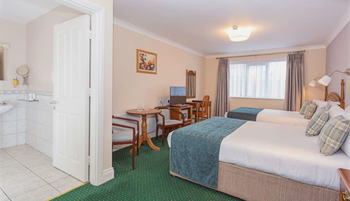
Abbey Lodge is a family run, B&B located just a 3 minute walk from the town centre. The charming house, comfortable beds and a sunny spot for breakfast are just a few of the B&B's advantages.

This 4-star guesthouse boasts 15 luxurious bedrooms. The house is tastefully decorated throughout and features many interesting antiques and art. The accent is on friendly personal service backed by the highest standards throughout.
A short transfer (20 min) will drop you off at the start of your walk at Galway's Bridge. Head west towards the Black Valley where spectacular lake and mountain views await. From time to time, you’ll be following the famed Ring of Kerry road route, with impressive views across to Purple Mountain, and MacGillycuddy’s Reeks beyond. Ascend out of the Black Valley to find views of Bridia Valley ahead. Soon you’ll reach the shores of Lough Acoose and Glencar, with far-reaching views of the Dingle Peninsula and Carrauntoohil, Ireland’s highest mountain (1,039m).
It is possible to shorten this walk by getting transferred a little further along the trail in Black Valley. This would make your total walking distance 21km (13 mi). If you are interested, please let us know at the time of booking so we can arrange this for you.
There is only one accommodation in Glencar, The Climbers Inn. In the busier months, this may be full. If this is the case, you will be booked into alternative accommodation outside of Glencar, affecting your daily mileage. Refer to accommodation directions on confirmation for accurate distances.
Ascent: 656m (2,152ft) / Descent: 672ft (2,205ft)
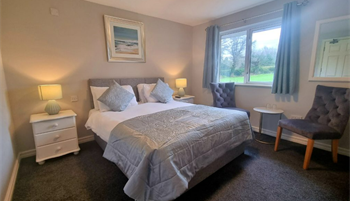
The Climbers Inn Glencar, dates back to 1879, it is one of the oldest walking and climbing establishments in Ireland. The Climbers Inn has been extensively refurbished throughout providing excellent en-suite rooms. The Climbers Inn affords guests spacious and clean rooms, onsite traditional bar and free wifi.
Easy trails characterise this section as you follow a ‘boreen’ (small road) and then gravel forestry tracks to Lickeen Wood. Panoramic views of the wooded valley of Glencar and Lough Caragh enchant you as you round the hill and then ascend the gentle lower slopes of Seefin.
You have a choice of (both delightful) paths to Glenbeigh; either descending on a more relaxed but longer approach (9km), or following a shorter rocky track to Glenbeigh (4km) ascending 100m to the saddle at Windy Gap, from where you will enjoy vistas over beautiful Inch Strand beach and the Dingle Peninsula. Glenbeigh is situated on the edge of the Atlantic Ocean and is a great place to revel in traditional music and old-world pubs.
via Windy Gap: 14 km (8 miles); Ascent: 369m (1,211ft) / Descent: 422m (1,385ft)
Road route: 18 km (11 miles); Ascent: 270m (886ft) / Descent: 330m (1,083ft)

Liosderrig House B&B is a family run accomodation that offers cozy rooms with wonderful sea views. The bright and airy bedrooms are individually decorated. All rooms are en suite. Full Irish breakfasts are served daily at Liosderrig House B&B.

Your hosts extend a warm welcome to this small traditional hotel. They have 12 well-appointed rooms and a bar and restaurant where you are sure to get a hearty meal and a drink and perhaps some live music!
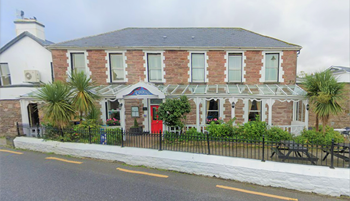
Established in 1895, the family run Towers Hotel is located in the heart of the picturesque village of Glenbeigh. The cosy rooms either have views of the village or the beach. The Curra Restaurant serves modern Irish cuisine and sources its meats from local suppliers and seafood from Dingle Bay. The lounge bar has a baby grand piano and artwork from Irish artists. Towers Old Bar has a range of bar food, a real log fire and there is also an outdoor seating area in the garden.
The trail takes you out of Glenbeigh and onto an elevated path crossing over Rossbeigh Hill where you can enjoy spectacular views across Dingle Bay. This scenic hill track continues onto the slopes of Drung Hill to follow an old coach road passing Foilmore and into the Ferta valley beside the wild Atlantic. Arrive in Cahersiveen on the banks of Valencia River, this is the principal town of the Skellig Kerry Peninsula.
A long but wonderful day of walking on the Iveragh peninsula - If wanting a shorter day, contact details for transfer pick up will be provided within the booking information.
We recommend: Adding an extra night in Cahersiveen. This will allow you to rest your legs after some of the toughest sections of the Kerry Way. For those wanting to keep exploring, there is plenty to do in the area including the nearby Valentia Island which is perfect to cycle around or you can visit UNESCO world heritage site, Skellig Michael on a boat trip. If in full relaxation mode, there are some great restaurants and traditional pubs in the town as well as the Skellig Six18 Distillery just outside of the centre.
Ascent: 531m (1,742ft) / Descent: 536m (1,759ft)

This is a family run business with over 60 years in the hospitality industry.
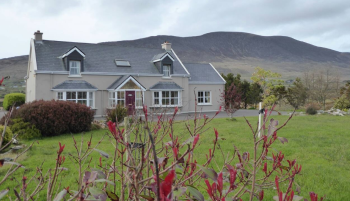
Located 3km outside the town of Cahirciveen on the stunning Ring of Kerry. This country house looks onto Cnoc na dtobar mountain and the Fertha river. Our guestroom is very comfortable with guest sitting room & private bathroom. Fresh Scones, yogurt, juice, tea & coffee for breakfast. If you are traveling to Skelligs this is a very convenient location.

Quinlan & Cooke offers the ideal base for guests looking to explore Skellig Michael, Waterville and the Ring of Kerry, all of which are steeped in history, culture and rugged beauty. The family run townhouse offers 10 beautiful ensuite guestrooms and a luxurious suite, all individually decorated in a unique and quirky style.
After a hearty breakfast, a short transfer (20 min) will bring you to Foilmore to start an undulating inland walk to Waterville. Today you will explore the remote and rugged Irish landscape at its best, with first-class walking. Ascend the highest point of the Way’s coastal route, the summit of Knockavahaun, at 371m. A patchwork of forest and fields stretches out to Lough Currane, Ballinskelligs Bay and Waterville.
Charlie Chaplin and his family used to spend long holiday periods here and a bronze statue stands on the promenade at Waterville.
Ascent: 752m (2,467ft) / Descent: 766m (2,513ft)

Golf Links View B&B is in a scenic location with views to Ballinskellig Bay and the Mountains of the Iveragh Peninsula on the Ring of Kerry, Ireland. The town of Waterville is only a shortwalk away and sits between the bay and Lough Currane. A warm welcome awaits from John and Breda, and home baking is often served on check in, delicious after a day walking.
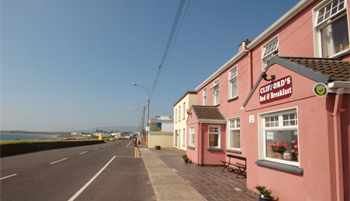
They are a traditional family run B&B and have been welcoming guests since 1991 - You will be guaranteed a warm welcome when you check in at the Clifford’s Ocean View B&B. The rooms are all individually decorated, have en-suite facilities and all the amenities you require for a lovely overnight stay. They also have a drying room for those unfortunate wet weather days. They are also centrally located so walking distance to a number of restaurants and pubs.

One of the region’s top hotels, the Butler Arms in Waterville is run by the Huggard family, originally opened in March 1884.I t offers an exceptional warm Irish welcome to its guests, has luxurious facilities and is set in a wonderfully scenic location in the heart of Waterville in county Kerry.
Today's route follows a coastal path and you will enjoy constant views of the sea and inshore islets, as well as the Beara Peninsula hills across the Kenmare River estuary. Why not take a short detour (2.5km) to visit Derrynane House National Historic Park (visitors’ centre has a seasonal opening), the ancestral home of Daniel O’Connell, Ireland’s ‘Great Liberator. Descend through the native hazel forest and see the Caherdaniel Stone Fort before arriving in the town itself.
If your legs are feeling a bit heavier today you can shorten today's walk by going via the inland route that heads north of the Derrymane House Grounds. This shortens the route to 12.5km.
via inland route: 12 km (7 miles); Ascent: 291m (955ft) / Descent: 264m (866ft)
via Derrynane Beach: 16 km (10 miles); Ascent: 273m (896ft) / Descent: 252m (827ft)

Clare and Dezy's home is around 2.5 mi (4km) before Caherdaniel. From its outstanding location on the Ring of Kerry, you can take in a 300° panoramic view of the wild coasts and beautiful Derrynane beach, the Atlantic Ocean in all its moods, and patchwork green fields dotted with sheep. Most rooms have sea views and the communal lounge/breakfast area has magnificent views in all directions. There is excellent Wi-Fi and phone reception. There are no TVs and they pride themselves on being a place of peace and quiet.
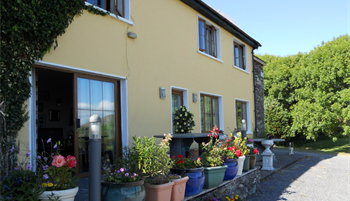
The Olde Forge has been serving breakfast to Kerry visitors for over 20 years! Cathy Fitzmaurice’s homely accommodation is located just 2km from the village of Caherdaniel. Rooms boast an unrivalled view over Kenmare bay to greet you in the morning. All rooms are en suite with shower and have tea/coffee making facilities and free WiFi.

Upgrade Option (additional supplement added at confirmation): Family run, newly restored Georgian guesthouse outisde of Caherdaniel (transfers included). Guests can enjoy comfortable en suite rooms, continental breakfast and access to the outdoor terrace where they are free to soak those aching muscles in the hot tub.
Get ready for a "roller-coaster day" filled with spectacular sea views and mountain scenery. Set off along Ireland’s ‘Old Butter Road’, used in the 19th century to transport butter to Cork. Climb the lower slopes of Eagle Hill before revealing some lovely views across the inlet of Kenmare. Along the way, you can take a short but busier detour to visit Staigue Fort, one of the largest ring forts to be found in Ireland. Walk an old coach road leading to a boreen as you trace the track above the main Ring of Kerry road, following rocky trails, approaching the picturesque village of Sneem, with its jagged and rocky river bed.
Ascent: 405m (1,329ft) / Descent: 444m (1,457ft)

Coomassig View B&B is a luxury spacious dormer bungalow, situated less than half a km from the colourful little village of Sneem on the N70 Ring of Kerry. The comfortable and spacious double, twin and family rooms are all with en suite bathroom and satellite TV. Facilities include drying facilities for walkers and cyclists, private parking and lock up indoor storage for bicycles and back packs. The house backs onto the Kerry Way just outside Sneem and is perfectly situated for hikers.

Ideally located on the Ring Of Kerry, the Sneem Hotel offers modern and comfortable accommodation. The Hotel offers numerous servies, such as restaurants, free bike hire and Spa. This quiet and unspoilt location will take your breath away and make you feel right at home from the moment you arrive at this beautiful hotel.
Due to a lack of accommodation between Sneem and Kenmare, a morning transfer will bring you to the tiny hamlet of Templenoe (15 min). From here, walk on gentle terrain as you pass Dromore Castle, built in the 1830s before the Irish famine. The trail then weaves its way through beautiful forest and follows the waters edge, giving spectacular views over Kenmare Bay to the Beara Peninsula.
After crossing Blackwater Bridge, views of Kenmare River and Rossmore Island open up before crossing Tahilla River and returning to Sneem for a second night.
Ascent: 277m (909ft) / Descent: 317m (1,040ft)

Coomassig View B&B is a luxury spacious dormer bungalow, situated less than half a km from the colourful little village of Sneem on the N70 Ring of Kerry. The comfortable and spacious double, twin and family rooms are all with en suite bathroom and satellite TV. Facilities include drying facilities for walkers and cyclists, private parking and lock up indoor storage for bicycles and back packs. The house backs onto the Kerry Way just outside Sneem and is perfectly situated for hikers.

Ideally located on the Ring Of Kerry, the Sneem Hotel offers modern and comfortable accommodation. The Hotel offers numerous servies, such as restaurants, free bike hire and Spa. This quiet and unspoilt location will take your breath away and make you feel right at home from the moment you arrive at this beautiful hotel.
A short transfer will bring you back to Templenoe (15 min) to continue on the Kerry Way to the bustling market town of Kenmare. The first section of this day follows a minor road as its climbs gently and skirts around the Ring of Kerry Golf Club, giving spectacular views of the Beara Peninsula. Once off the minor road, the trail climbs up and down Gortamullin Hil and crosses the Finnihy River into Kenmare. You may like to walk to the ancient 4,000-year-old Reenagoppul stone circle, situated just 0.5km outside of the town centre. Kenmare is a great place to spend an evening with a host of great pubs and restaurants.
For an easier day, you may want to skip the first 6kms and join the Kerry Way as it climbs up to Gortamullin Hill. Your driver will be happy to drop you off at the far end of Templenoe to cut down your walk to 8.5km, allowing for a leisurely day and extra time to explore Kenmare in the afternoon.
Ascent: 344m (1,129ft) / Descent: 372m (1,221ft)
Optional Shorter Walk: 9 km (5 miles); Ascent: 254m (80ft)/ Descent: 265m (840ft)

In business for over 30 years four stars Rockcrest House is where style, elegance and attention to detail comes to life. Your hosts Marian & David O'Dwyer offer all the modern conveniences in a warm, welcoming and friendly atmosphere. With beautiful scenery, lots to do, gourmet food and live music; Kenmare & Rockcrest is the ideal base for touring the famous Ring of Kerry.
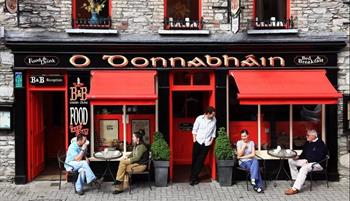
O’Donnabhain’s offer guest accommodation with en-suite rooms. While they are situated right in the heart of Kenmare, their modern rooms are located away from the busy street and bar area.

You are assured the warmest of welcomes at Watersedge. This fine property offers all that is required for a most comfortable stay. The bedrooms are finished to a very high standard, with the house enjoying lovely views.
This final stage of the Kerry Way takes you along the Old Kenmare Road through farmland and over a high saddle before reaching the leafy woodlands. Enjoy a scenic walk through Killarney National Park and pass through old oak forests rich with lichens and home to native Irish deer. See the verdant moss-covered forest surrounding Torc waterfall and Muckross Estate. With views across the Killarney Lakes, you’ll soon find yourself back in the bustling small tourist town of Killarney itself, where you can raise a glass at one of the many pubs or bars to having completed the Kerry Way!
Ascent: 643m (2,110ft) / Descent: 629m (2,064ft)

Larkinley Lodg is situated just a 2 minute walk from the town centre of Killarney. The B&B has elegant ensuite guestrooms furnished with LCD flat screen TV, crisp linen, power showers, and luxury breakfasts. The B&B also run Killarney Private Tours which is a service provided by the accommodation taking guests on very bespoke tours of the region. Please contact the B&B direct if interested.

Abbey Lodge is a family run, B&B located just a 3 minute walk from the town centre. The charming house, comfortable beds and a sunny spot for breakfast are just a few of the B&B's advantages.

This 4-star guesthouse boasts 15 luxurious bedrooms. The house is tastefully decorated throughout and features many interesting antiques and art. The accent is on friendly personal service backed by the highest standards throughout.
After breakfast your walking holiday will come to an end. See the Travel Info section for some useful details for your onward travel.
Other Information
Is it for me?Ireland’s longest national trail is steeped in the rich history of the Emerald Isle and takes in stunning lakes, mountains and remote valleys, as well as superb walking with coastal views. At times, you’ll follow the famed ‘Ring of Kerry’ route, taking life at a slower pace on foot.
Classic Routes | If you’re the active, outdoorsy type, who’s interested in taking on the great routes of the world or looking for a challenge, then our Classic Routes are for you. We’re talking the West Highland Way, Tour Du Mont Blanc and the Passau to Vienna Danube Cycle Path, to name but a few!
Inn to Inn Walking | Walk from place-to-place changing accommodations each night. Generally staying in B&Bs, inns, and guesthouses.
Solo Travellers
The minimum age for this tour is: 15 Years
Our 11-day Kerry Way walking trip is graded moderate to strenuous. This is one of Ireland's longest waymarked trails and it is suitable for regular and experienced walkers. If you are interested in walking the first sections of the Kerry Way, please see our 5-day short break which is graded easy to moderate.
- On our 12-day itinerary, start walking from Killarney. Although the final 15km on the last day is a repeat of the first 15km on Day 1, you will walk in the opposite direction and get the added satisfaction of completing the full route.
- Our 11-day itinerary is set up to avoid walking the same section twice (Killarney - Galway's Bridge). A morning transfer on your first walking day brings you to Galway's Bridge, from here it is a long and strenuous walk to Glencar. You will walk the section between Galway's Bridge and Killarney on your final day.
Walkers will need to be prepared for some long days including a 31km (19 mile) day, although it is possible to shorten this day. The first half of the Kerry Way is more strenuous than the second half, this is mainly due to the ruggedness of the terrain through Black Valley and Glencar. In bad weather, these sections can take much longer than expected. It is generally a low-level (albeit undulating) walk, interspersed with several ridge and spur crossings of between 200-300m. The highest point of the route is the summit of Knockavahaun at 371m. It is advisable to do several longer walks of a similar distance to build up your fitness before setting off on the Kerry Way.
We recommend adding a rest day somewhere near the middle of the itinerary, after completing the challenging first half of the way. Cahersiveen is the ideal place to add an extra night, there are plenty of things to do and the town has great amenities.
The Kerry Way uses a variety of routes, from forest tracks, farm tracks, and paths across moorland and fields to historic old roads through villages. Overall about 35% of the Kerry Way follows tarmac roads (also known as bitumen) which is less than most Irish national trails. This reflects the fact that rights of way are almost non-existent in Ireland. The road walking is scenic and mostly along quiet lanes with little traffic, although a few short sections are along busier main roads where extra care and attention are needed.
If you are thinking of travelling solo, please consider that mobile phone coverage may be patchy in remote areas along the trail. We also welcome small groups on the trail, ideally no bigger than 6-8 travellers due to accommodation limitations in remote areas along the Kerry Way. Booking in advance is a must.
The accommodations along the Kerry Way are small and varied, you will stay in family-run B&Bs, guest houses, and hotels. A warm welcome is guaranteed as well as traditional Irish hospitality. We will always try to accommodate you at the locations that are detailed in the itinerary, but this may sometimes be difficult due to limited availability. Some of the overnight locations are in remote valleys and for this reason, we might sometimes have to accommodate you elsewhere. If this is the case, you will always receive directions to and from the trail in your route notes or in some cases, return transfers from the path. Please be aware that this may result in slightly longer or shorter walking days.
We will be happy to accommodate your party with single rooms if requested and this trip is also available to solo walkers.
Meals
A hearty breakfast is included each morning. Lunch and dinner are not included so you are free to choose from the available options. Most of your accommodations will more than happy to provide a packed lunch on request and this can be booked on arrival. Alternatively, you can buy lunch at local shops or stop in a café. Dinner is available either at your accommodation or at nearby pubs or restaurants.
The route is well-waymarked throughout and easy to follow. Navigation is straightforward as you can use the Macs Adventure Smartphone App which has maps, GPS tracks, and daily route information. Simply download the GPS tracks for offline use and follow the route on your phone with the assurance that navigation will be simple, and you can’t get lost. You will find more information on downloading the app in your Macs Adventure Account.
Recommended Reading
Although not essential, if you would like more information on the route please see our recommendation below:
- Kerry Way (Rucksack Reader)
- 24/7 Emergency telephone support from our UK office
- Hand-picked accommodation in B&B's guesthouses and small hotels
- Breakfasts
- Baggage transfer
- Transfers as listed in itinerary
- Detailed trip info and mapped tracks, via the Macs App
- All your trip documents provided digitally through your online Macs “My Account”
- Travel to the start or from the finish of the walk
- Lunches, dinners, snacks and drinks
- Travel Insurance
- Personal Equipment
- Taxi transfers or public transport should you need to skip a stage
- Extra nights before, during and after your walk.
You can start the Kerry Way on any day of the week between April and October. Wintry conditions may be experienced at the start and towards the end of the season. July and August are the busiest months and accommodations tend to fill up fast. The ideal months are May/June and September which offer a quieter experience. If you are interested in walking the Kerry Way, we recommend booking in advance to avoid disappointment.
Irish weather is typically unpredictable year-round so be prepared for any conditions and you will be pleasantly surprised. No matter what month you choose to travel, being close to the coast and in remote valleys between mountains, means it can get wet and windy at any time of year (particularly at the start and towards the end of the season). It is important that you check the local weather forecast before setting off each day. It is safe to walk along coastal stretches in most weather, as long as you are well-prepared.
The Kerry Way conveniently start and finishes in Killarney and there are a number of different ways to get there.
Flights are available to Kerry Airport with Ryanair from London Luton, London Stansted and Frankfurt. If you can't fly into Kerry Airport directly, there is an Aer Lingus flight between Dublin and Kerry Airport. There is a bus (25 mins) from Kerry Airport to Killarney. For bus timetables, check the website of Bus Eireann.
You could also fly into Cork Airport with Aer Lingus from Bristol, London Heathrow, London Gatwick, Glasgow, Edinburgh, Manchester and Birmingham. From Cork Airport it is a short bus ride (20 mins) to Cork Kent train station, then a 1h30-2hr train ride to Killarney. For train timetables, check the website of Irish Rail.
Another option is flying into Shannon Airport with Aer Lingus from Dublin, Bristol, Manchester, London Heathrow and Birmingham, as well as Boston and New York JFK. Ryanair fly to Shannon from Liverpool and London Stansted. Air Transat fly from Toronto and US Airways fly from Philadelphia to Shannon. From Shannon Airport take a bus (approx. 2h50-3h40, via Limerick) to Killarney.
It is also possible to take a ferry from Holyhead to Dublin, please check Irish Ferries for more information.
Getting from Killarney, just follow the getting to suggestions in reverse.
Your bags will be collected from your accommodation each day and moved onto your overnight accommodation. We ask you to limit your luggage to one bag of up to 18kg per person.
At Macs Adventure, we work in partnership with many luggage transfer providers who set a limit on how many bags/suitcases they will transfer per person, and also the weight of the bag/suitcase. Your booking includes a transfer of 1 bag per person. It is very important that you read the luggage information specific to your tour before departure. If you do not adhere to these limits, there is a great possibility that you will be charged locally both for extra bags or if they are too heavy. This limitation can be a challenge, especially as airlines generally have limits that are higher. However, our luggage providers have reasons for these limits (usually due to the Health and Safety of their employees), which we must respect.
The distances and ascent/descents are approximations of the recommended routes. Please be prepared by packing all necessary items, for example, proper rain gear (jackets and pants), sun hat and sunscreen. Your information pack has a detailed equipment list which includes standard walking/cycling gear such as good walking shoes or boots, warm and waterproof clothes for the cooler months and lightweight clothing for summer, and a day pack.
Online Documents
At Macs Adventure we care about the environment! We’re taking action to minimize the impact we have by converting the majority of our tour documentation for online delivery.
On this tour, all your detailed tour information will be digitally delivered. You will have access to this documentation via “My Account” on our website.
You can find a detailed equipment list in your Macs App which includes standard walking gear such as good walking boots or shoes, warm and waterproof clothes, and a day pack.
It is a requirement of booking this tour with Macs Adventure that you have suitable travel insurance which covers you for the activity and emergency evacuation and hospital care.
You can use public transport, local taxis or our baggage van may be able to move you to the next overnight stop. Full details are included in your info pack.
This route is well way-marked and much of it does follows a path. It is always advisable that you are know how to navigate with a map and compass although the Way is largely very straightforward to follow, especially with the maps and guidebook we provide.
At up to 33km a day for the more strenuous tour, and up to a total of around 210km for the complete circuit, the Kerry Way is a fair distance and the higher your level of fitness the more you will enjoy the experience. Most of our itineraries involve an average of around 5-6 hours of walking daily so you should be comfortable walking on good tracks and paths over undulating terrain. If you currently don’t enjoy that level of fitness regular walking in hilly terrain supplemented by cardio-vascular exercise for at least 6 months prior to your walk is recommended. A good gym or personal trainer will be able to draw up a personalised training programme.
Our itineraries are mostly graded moderate and are suitable for regular walkers. Youll be walking along green roads, historic old roads, farm and forest tracks, paths across moorland and fields and minor roads. It is generally a low-level (albeit undulating) walk, interspersed with several ridge and spur crossings of between 200-300m. The highest point of the route is the summit of Knockavahaun at 371m.Overall about 35% of the Kerry Way follows tarmac (bitumen) roads, which is less than most Irish national trails. This reflects the fact that rights of way are almost non-existent in Ireland. The road walking is scenic and mostly along quiet lanes, however there are from time to time some busier stretches where you will need to be cautious with traffic.
We suggest you book as soon as your plans are finalised as the Kerry Way is extremely popular especially over April/May and July/August. You will find up to date availability on our website and we will always try and accommodate your plans.
You will need good walking shoes/boots (ideally waterproof), comfortable walking clothes, waterproof jacket and trousers, a daypack and hats/gloves etc. You can find a list of all equipment to bring on your walk in your Macs App.
Traditionally April through to August is a very pleasant time of year to walk.
Unfortunately we are unable to accommodate walkers with dogs as many of the accommodation providers we use do not accept pets and several sections of the way are closed to dogs as they are permissive paths through farm land.
-
 WalkingEssential Facts About the Kerry WayRead More2 Min Read20 November 2020
WalkingEssential Facts About the Kerry WayRead More2 Min Read20 November 2020 -
 IrelandThe Dingle Way vs The Kerry WayRead More3 Min Read29 May 2025
IrelandThe Dingle Way vs The Kerry WayRead More3 Min Read29 May 2025 -
 Walking6 Reasons to Walk Ireland's West CoastRead More2 Min Read25 October 2017
Walking6 Reasons to Walk Ireland's West CoastRead More2 Min Read25 October 2017 -
 Walk of the Week: The Kerry WayRead More2 Min Read26 August 2016
Walk of the Week: The Kerry WayRead More2 Min Read26 August 2016 -
 WalkingFestivals and Events in IrelandRead More2 Min Read09 May 2019
WalkingFestivals and Events in IrelandRead More2 Min Read09 May 2019 -
 WalkingHighlights of the Dingle WayRead More2 Min Read05 August 2022
WalkingHighlights of the Dingle WayRead More2 Min Read05 August 2022 -
 The Best Time to Visit IrelandRead More5 Min Read07 October 2024
The Best Time to Visit IrelandRead More5 Min Read07 October 2024 -
 IrelandBest Walks in IrelandRead More2 Min Read06 October 2025
IrelandBest Walks in IrelandRead More2 Min Read06 October 2025
-
Save %12 Days 11 Nights
The Kerry Way - 12 Days & 11 Nights
Walk Ireland’s longest national trail and experience the unspoilt beauty of the Kerry Way.Highlights- Walk Ireland's majestic Kerry Way over 10 days
- Discover traditional irish music
- Follow trails surrounded by high peaks
-
Save %5 Days 4 Nights
Kerry Way Short Break
Walk part of Ireland's longest waymarked footpath from Killarney to Glenbeigh on the Kerry WayHighlights- Lakes and mountains of Killarney National Park
- Soak up the warm atmosphere in an Irish pub
- Remote landscapes of Black Valley & Bridia Valley
-
Save %10 Days 9 Nights
Beara Way (10 Days & 9 Nights)
Walk the Beara Way with some longer and some shorter walking daysHighlights- Discover the Beara Way and its dramatic landscapes
- A mix of coastal and mountain walking
- Eyeries, a colourful fishing village
WHY MACS?

As Seen In

Around Since 2003

24,000+ Customer Reviews






















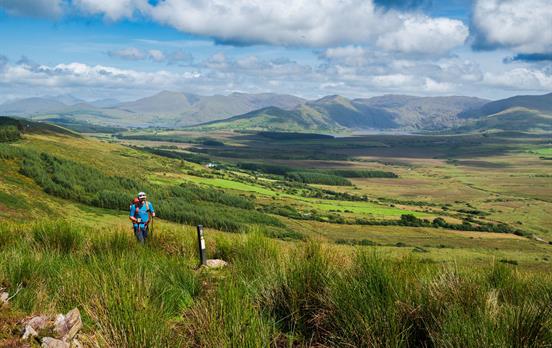


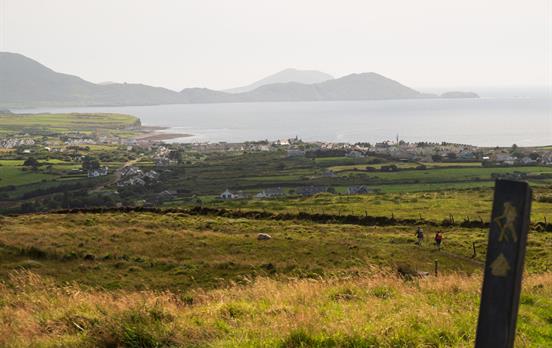

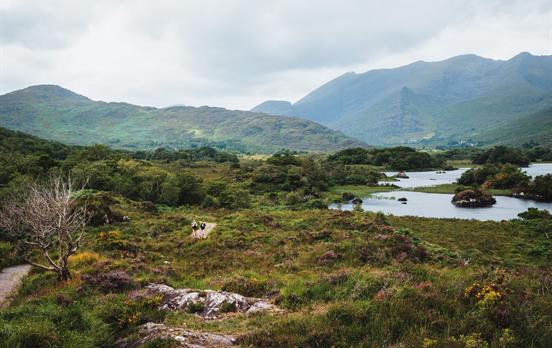
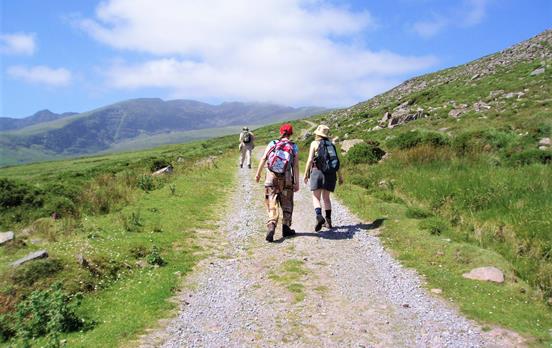
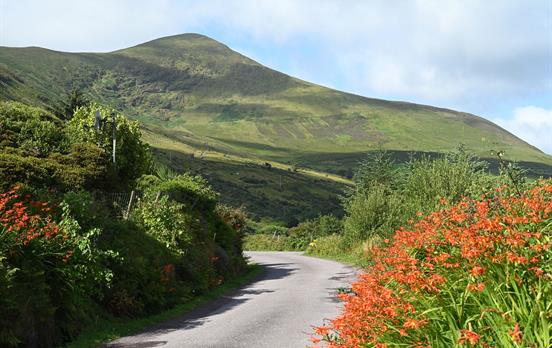
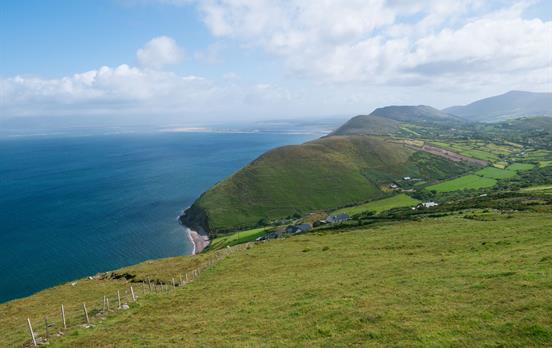



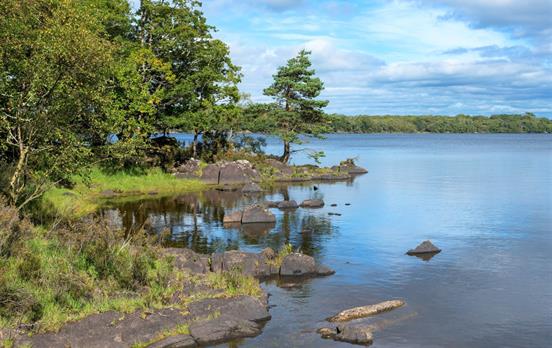
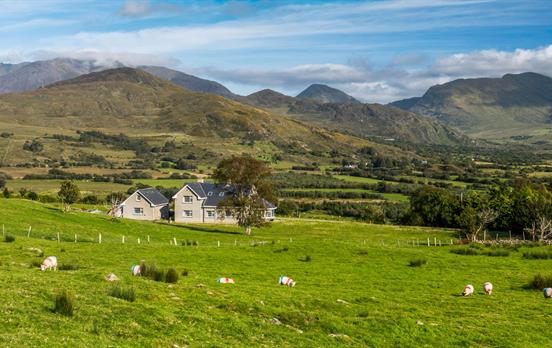
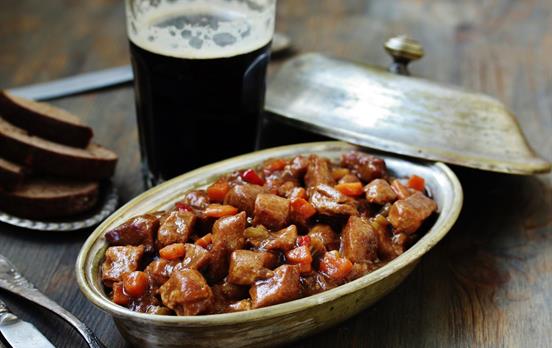
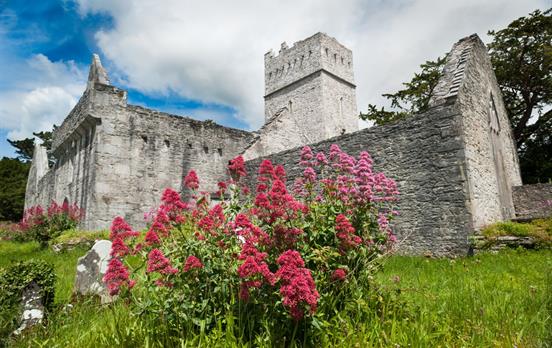
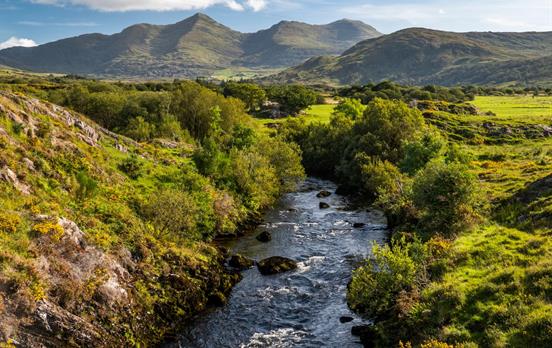
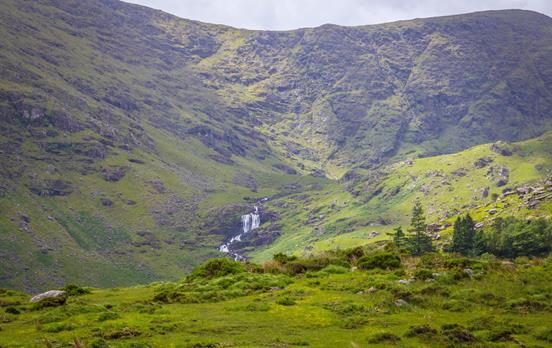
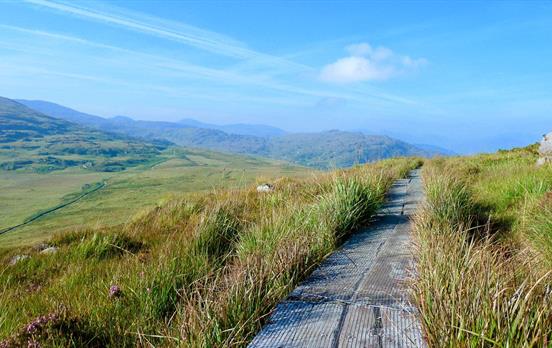


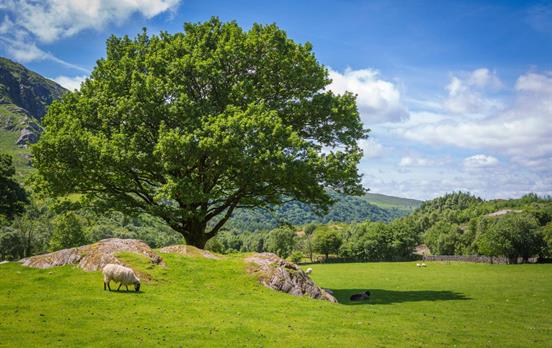

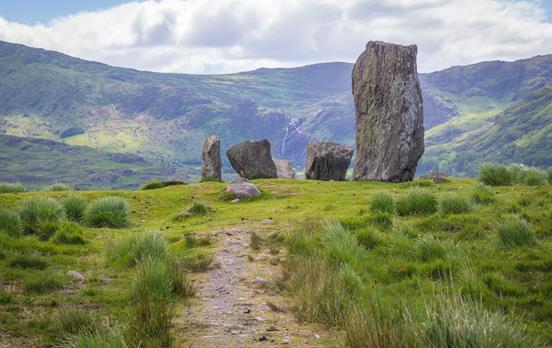

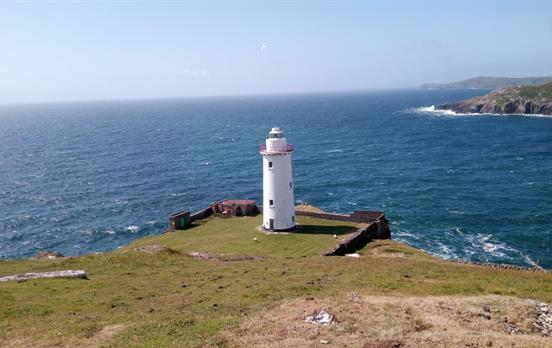
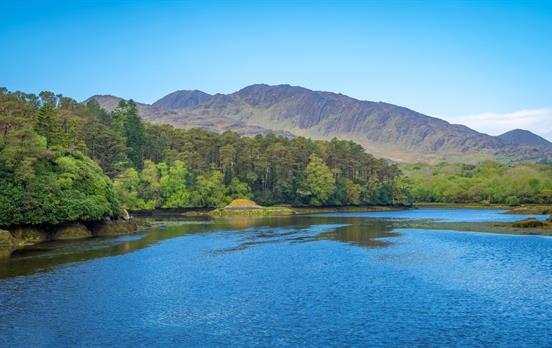
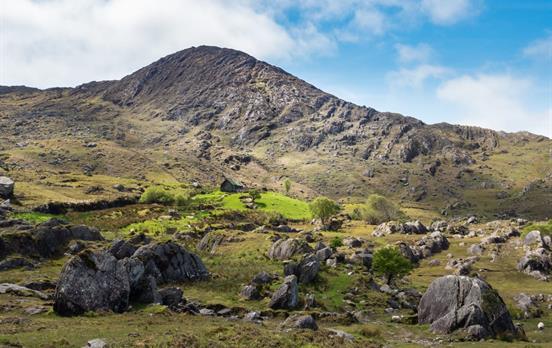

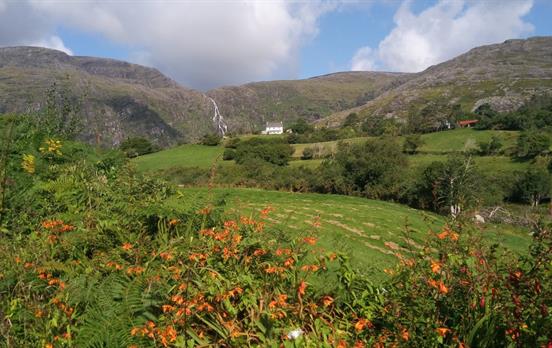

 Australia
Australia New Zealand
New Zealand South Africa
South Africa European Union
European Union